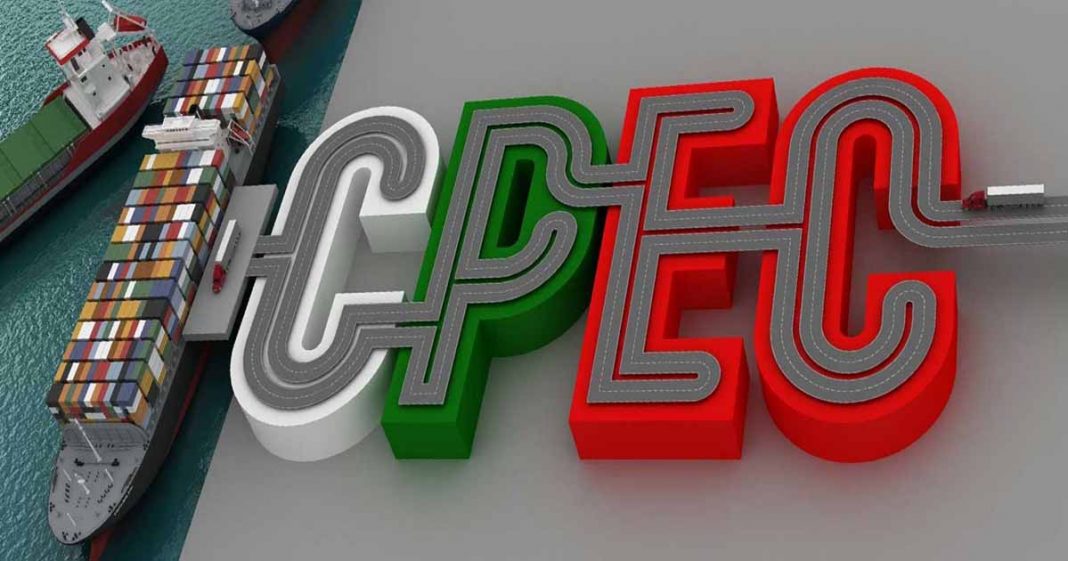Scholars, policymakers, and media commentators have been discussing different dimensions of the China-Pakistan Economic Corridor (CPEC) across the globe since its beginning in 2013. There are different reasons for different people to focus on the multi-billion project between two ‘all-weathers’ friends. Interestingly, the view that “the peaceful rise of China has produced turbulence in the global power structure and its linked media” seems to be getting more intention as the project is being termed as a “debt trap” or a new version of “East India Company” to colonize Pakistan.
Pakistan’s relationship with China should not be a news for anybody interested in politics or the history of this region. The story began in January 1950 when Pakistan was among the first to recognize the People’s Republic of China and set up its diplomatic mission in Beijing on 21 May 1951. Geographical contiguity and civilizational similarities helped both countries develop a relationship “higher than the Himalayas and deeper than the deepest sea in the world, and sweeter than honey”. However, scholarly discussion about the impacts of Pak-China friendship on the former’s domestic political system is a recent phenomenon that demands careful attention.
Filippo Boni, Lecturer in Politics and International Relations at the Open University, Milton Keynes, UK and Prof. Katharine Adeney, Director of the University of Nottingham’s Asia Research Institute, Nottingham, UK, wrote an interesting paper to explain the impacts of the CPEC on Pakistan’s federation. The article titled The Impact of the China-Pakistan Economic Corridor on Pakistan’s Federal System: The Politics of the CPEC chiefly argues that; a) Centripetal nature of the CPEC threatens to increase tension pertaining to the center–provincial relations in Pakistan; b) Centralization in Pakistan’s federal system has increased as a result of the Corridor; c) due to “the close relationship between Imran Khan’s victory and the support of the military, civilian control over the project will be substantially reduced”; d) the first four years of “the CPEC were more in line with Pakistan’s history of favoring Punjab as the core region”.
To explain the main argument, Boni and Adeney outlined four explanations to establish that there has been “centralization of the decision making process” while initiating and completing the CPEC project: 1) China wanted “a dynamic and centralized decision-making process”; 2) Civilian government (PML-N) was unwilling to devolve power; 3) Military wanted its share; 4) “federal government’s dismissal of provincial capacity for technical duties pertaining to the projects has encouraged the central government to centralize”.
Read More: CPEC Edition: Message from Imran Khan, Prime Minister Islamic Republic of Pakistan
In my view, the very idea projected in this article is not only empirically unsound but politically misleading. First off, several projects of the CPEC come under the Federal Legislative List’s (FLL) Part 2 which includes electricity, railways, ports, national planning, and national economic coordination, as well as public debt. Interestingly, all these subjects come under the Council of Economic Interests (CCI). The composition of the CCI may help us understand if Punjab can actually dominate it. The Prime Minister Chairs the CCI and Chief Ministers of Balochistan, Khyber Pakhtunkhwa, Punjab, Sindh, Minister for Planning, Development &Special Initiatives Minister for Inter-Provincial Coordination and Minister for Power Division participate as its members. So, there is no question of underrepresentation.
According to the data collected by the writers, Khyber Pakhtunkhwa has more Transport/Infrastructure related projects than Punjab: Punjab 2, Sindh 2, Khyber Pakhtunkhwa 4, Balochistan 2 and Gilgit-Baltistan 2. The writers point out that though these projects have been “equitably distributed” and “indeed KP has more than others”, yet “there is a marked disparity in their competition”. This delay, even if it is not due to a lack of administrative skills on the part of the provincial governments, does not add any value to the idea that “Punjab tends to get more”. On the contrary, it proves that Punjab despite having 208 million population (53% of Pakistan’s total) got only two transport/Infrastructure projects.
Similarly, when it comes to energy projects Punjab has only 5 projects, whereas Sindh got 11, Khyber Pakhtunkhwa 1, Balochistan 2, and Azad Jammu and Kashmir 1. The writers admit that “Sindh has benefitted from energy projects under the CPEC” but seem to be complaining that “Balochistan has benefitted much less”. If we look at the province’s population and geography the distribution may look quite equitable. However, the main point here is that Punjab did not get more. The writers challenged their own argument.
Read More: EXCLUSIVE: Planning minister Asad Umar explains how CPEC focus has shifted
Finally, the claim that “the close relationship between Imran Khan’s victory and the support of the military, civilian control over the project will be substantially reduced” is disappointing as it seems to be in line with political criticism leveled by some quarters of media and mainstream opposition parties in Pakistan against Prime Minister Imran Khan’s government. Boni and Adeney do not offer any explanation or evidence to back this bold assertion up.
Farah Adeed is working as Assistant Editor, Global Village Space (GVS). The views expressed in this article are the author’s own and do not necessarily reflect Global Village Space’s Editorial Policy.














